The Bada Valley or Napu Valley, as it is sometimes called, is part of the Lore Lindu National Park located in Central Sulawesi, Indonesia. Now, Sulawesi in general has always been of particular interest to me for a variety of other reasons, but most of that is a story for another day.
 |
| "Palindo" - the Entertainer. Megalithic statue at Bada Valley. |
Researchers and philosophers have long analysed the significance of megaliths, yet with or without understanding, their work never ceases to fascinate. Megalithic art has been said to represent eternity that lives beyond the notion of time. Massive, yet unpretentious. Unchanging. Unmoving. Timeless. Through centuries, nay millennia of sun, sands and storms. Still they stand—watching. Silent witnesses to our past. Secrets masked behind a timeless expression—whispered only to those who pause to listen.
Exploring the Bada Valley
Bada Valley is particularly prized for its natural environment – a scenic expanse of rice paddies and green plains, engraved with small streams, and surrounded by soft rolling hills which give way to dense forests and rocky mountains. The Lariang River flows through the entire valley and is crossed by three hanging bridges. This river is irrigated into smaller streams which run across the terraced rice fields.Aside from scenic beauty, Bada Valley is world famous for its prehistoric relics from an ancient megalithic culture. Dozens of finely carved megaliths dating between 1,000 – 5,000 years old are scattered across the valley; a mysterious, yet magnificent testament to the skill and genius of a civilization that we know absolutely nothing about.
The Weird Geography of Sulawesi Island and Ancient Sea People
Sulawesi is home to some of the most interesting sites in Indonesia. Aside from its unique shape and multitude of endemic species, Sulawesi is home to the world’s oldest cave paintings (44,000 years old), with evidence of human settlements as far back as possibly 50,000 BC.
Now here’s the thing about Sulawesi. Indonesia consists of over 17,000 islands, most of which were at one point part of either Sundaland or Sahul – before the rising sea levels. Sulawesi, on the other hand was always an island. In fact, the island is separated from its neighbours by the Sulawesi Trench, which is a ridiculous 5,500 meters in depth. To make things even more interesting, Sulawesi is neither part of the Asian continental plate, nor the Australasian one, but rather seems to sit on a plate of its very own.
Pretty much, this means that at any point in history, anyone who decided to settle there arrived by sea. This certainly points to evidence of early human migration and sea travel, as far back as 50,000 years ago.
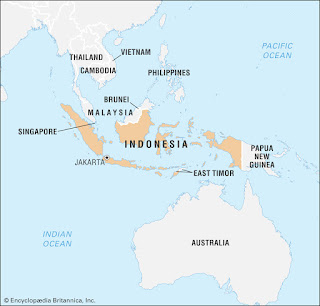 |
| Indonesia / Australia after rising sea levels |
The Bada Valley Megaliths
Megalithic monuments have been found in numerous countries across 6 continents with one thing in common: Often times, no one knows who built them.Perhaps the most famous “standing stone” site is Stonehenge, in England, or the giant heads of Easter Island. These sites have been visited by thousands, if not millions of tourists, and yet their meaning remains shrouded in mystery. The Megaliths of Bada Valley hold equal historic significance, but are difficult to access, buried in the mountainous terrain of Central Sulawesi. Some are found in the middle of valleys, some in streams, open fields or rice paddies.
The statues of Bada Valley are carved in human or animal form: owl, monkey or buffalo; all with the similar, and rather abstract style of being somewhat oval with large, round faces. The largest statue stands 4.5 meters tall and 1.3 meters thick.
A Closer look at the Bada Valley Megaliths
Nobody really knows how old the megaliths are, who made them or why they’re there. The most common response from the area’s inhabitants when asked about the origin of these statues is that “they’ve always been there.” The locals have various explanations for the meaning of these statues. Some believe they were used in ancestral worship or may have had something to do with human sacrifice. Others believe that these statues ward off evil spirits. One legend tells that they are criminals which were turned to stone, and there is even a superstition that the statues can disappear or move from place to place. Some have even been reported found in slightly different locations.Yet another curious aspect about these statues is that they are made from a type of stone not found anywhere near the area, so there would need to have been a mighty good reason to haul these huge, heavy stones off into the middle of nowhere.
According to an inventory conducted by the megalith enthusiasts of the Sagarmatha Faculty of Agriculture in 1994, there are over 300 megalithic sites around the Lore Lindu National Park. Objects exist in the form of statues, large pots, or vats and stone mortars. Unfortunately, many of these ancient relics have been smuggled out of the area, sold and traded.
Palindo, (The Entertainer)
This the largest statue in the area, standing 440 cm from the ground. It is suggested that the Palindo is related to death, because his round face and large eyes face west. According to Toraja culture, a region in South Sulawesi, West is the direction of death. This theory holds some credibility based on the fact that the Toraja and Bada people share linguistic and cultural similarities. For example, both the Bada and Toraja sacrifice a buffalo for the deceased during funeral ceremonies. Another local legend tells of an ancient King of Luwu, who in order to prove his dominance, once ordered 1,800 of his subjects to move the statue from its location in the Village of Sepe to Palopo, a long way south. The efforts failed, but as an insult to the abusive king, the people turned the once south-facing statue to the west. When the king’s followers tried to turn it back, it fell to its side, where it rests till today.
Maturu, (Sleeping,)
Mearuing 3.8 meters, Maturu looks very much like a horizontal Palindo, but with very faded features. It was referred to by explorers from the early 1900’s as “the statue that lies on its back.”
The Kalamba
Just up the path from Maturu, and are vast stone cisterns, which are dotted across the valley. The Kalamba may have been used as baths or burial chambers for nobles and those of high status.
Oba, (Monkey,)
This small fellow sits in the midst of a paddy field. It is a small statue, just barely over 40 cm from the ground. As its name suggests, this figure has amusingly monkey-like features.


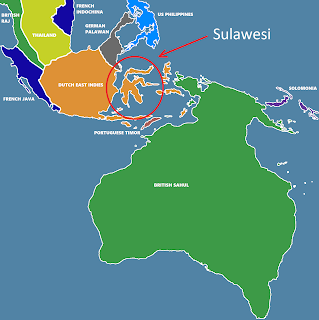
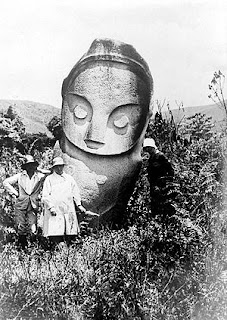
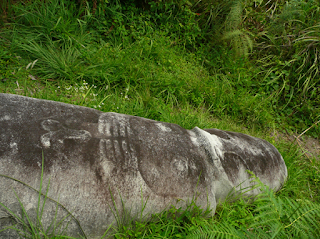
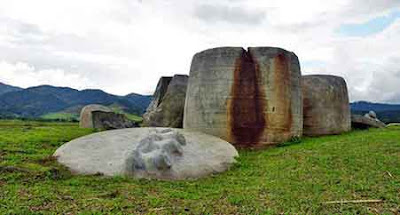
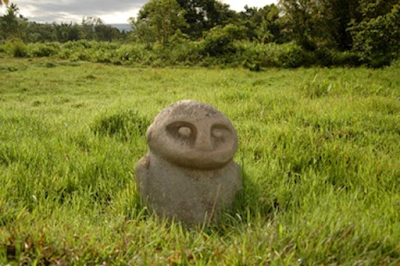

0 comments:
Post a Comment